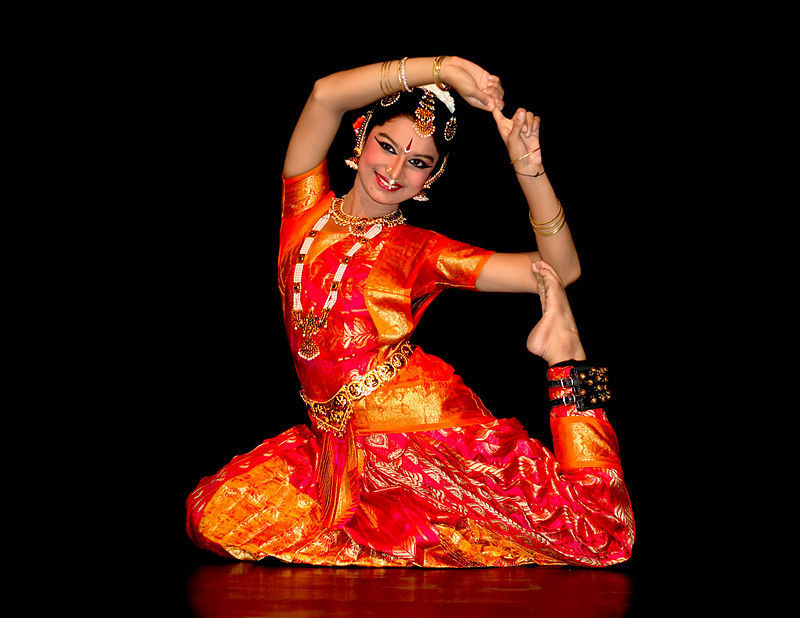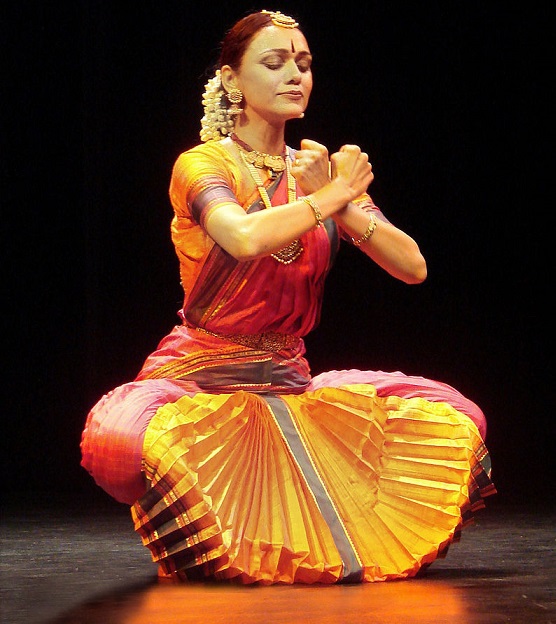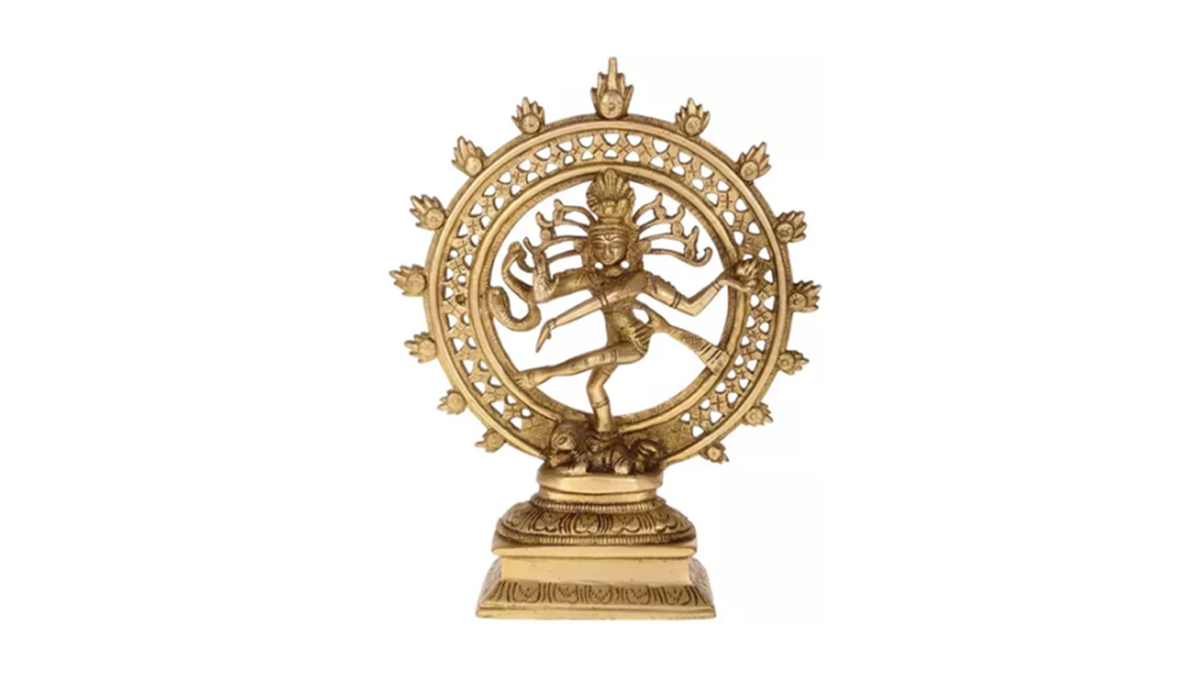Bharatanatyam – Dancing for the gods

Bharatanatyam is one of the 7 Classical dance styles in India, it’s a beautiful form of dance that belongs to the South Indian state of Tamil Nadu. Its gestures and postures are elegant and have been an enthralling audience for centuries.
Bharatanatyam is quite possibly the oldest classical dance tradition of India and was performed by women to express Hindu religious themes and spiritual ideas, particularly of Shaivism, but also of Vaishnavism and Shaktism.
The term Bharatanatyam is a compound of two words, Bharata and Natyam. From the word Bharata, Bha from Bhava meaning emotion, Ra from Raaga meaning music or melody, Ta from Taala meaning rhythm and Natyam meaning dance. Bharatanatyam – ‘bhava’ (emotion), ‘raga (melody), ‘taala’ (rhythm), Natyam’ (dance).
Origin
Bharatanatyam has been called Sadir in history and its theoretical foundation can be found in Natya Shastra the ancient Hindu text of performance arts. It is attributed to Bharata Muni, the ancient scholar, and its first complete compilation is dated to between 200 BCE and 200 CE or between 500 BCE and 500 CE.
Its best describes the theory of Shiva Tandava dance, the theory of rasa, or bhava, expression, gestures, acting techniques, basic steps, standing postures – all of which are part of Indian classical dances.
Bharatanatyam historical references have also been found in Silappatikaram Tamil epics which included a story of a dancing girl named Madhavi; it describes the dance training regimen called Arangatrau Kathai of Madhavi.
The carvings in Kanchipuram’s Shiva temple that have been dated to 6th to 9th century CE suggest Bharatanatyam was a well-developed performance art by about the mid 1st millennium CE.
A famous example of the illustrative sculpture is in the southern gateway of the Chidambaram temple dedicated to Hindu god Shiva, where 108 poses of the Bharatnatyam, that are also described as karanas in the Natya Shastra, are carved in stone.
Many of the ancient Shiva sculptures in Hindu temples are the same as the Bharata Natyam dance poses like Tandava-dancing Shiva as Nataraja.
Elements of Bharatanatyam:
Natya –
The dramatic aspect of Indian dance where pure technique is not used but only hand gestures and Abhinaya are the means of communication.
Nritta –
The abstract dance emphasizes the synchronization of rhythm, time, and dance movement. There is no poetic meaning to illustrate.
Nritya –
Natyam and Nritta combined and produce a perfect harmony of technique and expression.
Dress

The dress of a Bharatanatyam dancer is unique and resembles Tamil Hindu’s bridal dress. The sari is cut and tailored to make a costume that comprises a graceful trouser-like garment to give the legs free to move. An elegant fan which opens out in a full flower-like fashion when she flexes her knees or performs footwork. The Sari is worn in a special way, wrapping the back and body contour tightly, past one shoulder and its end then held by a jewelry belt at the waist.

She is typically adorned with jewelry, outlining her head or hair, on-ear, nose, and neck. Her face has conventional makeup, eyes lined, and ringed by collyrium which helps viewers see her eye expressions. To her ankles, she wraps one or more leather anklets [ Ghungroos ]. Her hair is tied up in the traditional way, often braided in with fragrant flowers (veni or gajra).
The fingers and feet outlines may be partially colored red with kumkum powder, a costume tradition that helps the audience more easily view her hand gestures.
Music
The music of Bharatanatyam is in the Carnatic style of South India, as is the recitation and chanting. In addition to a singer, some common instruments are violin, mrudangam (double-headed drum), and flute.
Bharatanatyam dances are generally performed in a specific order:

1. Pushpanjali
Pushpanjali is the first dance in a Bharatha Natyam performance. It is the salutation to the lord of dance Nataraja, the Guru, the musicians, and the audience.
2. Alarippu
Alarippu means Flowering bud, is an invocation piece, symbolizing the offering of respect to both God and the audience.
3. Jatiswaram
The next stage of the performance adds melody to the movement of Alarippu, and this is called Jatiswaram. The dance remains a prelim technical performance (nritta), pure in form and without any expressed words.
4. Shabdam
The performance sequence then adds Shabdam (expressed words). The solo dancer, the vocalist(s), and the musical team, in this stage of the production, present short compositions, with words and meaning, in a spectrum of moods.
5. Varnam
This marks the arrival into the sanctum sanctorum core of the performance. It is the longest section of the nritya. The artist presents the play or the main composition, reveling in all her movements, silently communicating the text through codified gestures and footwork, harmoniously with the music, rhythmically punctuated.
6. Padam
This is the stage of reverence, of simplicity, of abhinaya (expression) of the solemn spiritual message or devotional religious prayer (bhakti). The music is lighter, the chant intimate, the dance emotional.
7. Tillana
The performance sequence ends with a Tillana, the climax. It closes out the nritya portion, the movements exit the temple of expressive dance, returning to the nritta style, where a series of pure movement and music are rhythmically performed.
8. Mangalam
Meaning ending the performance. Here the artist will again salute god, the guru & the audience for making the performance a success.
Top Bharatnatyam dancers in India are Rukmini Devi, 1904, Padma Subrahmanyam, 1943, Alarmel Valli, 1957, Yamini Krishnamurthy and Mallika Sarabhai.






